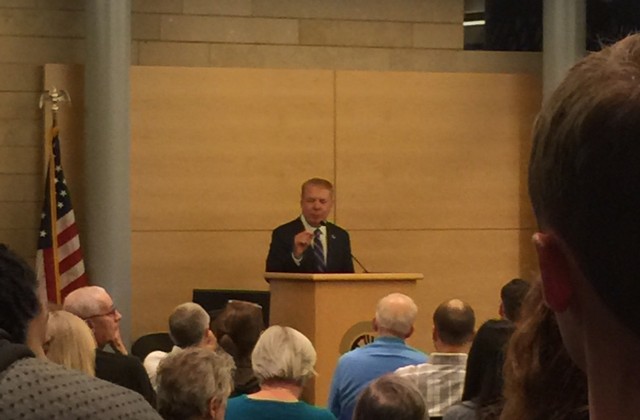"Penalties" for Developers: Confusion About HALA and the Bargain Continues
At last night’s meeting at City Hall and all day before I talked with people, including Councilmembers, press, neighbors, and bloggers, about the Mayor’s Housing Affordability and Livability Agenda (HALA) Committee recommendations and the Grand Bargain that is only 1 of 65 of those recommendations. What impressed me was the level of confusion about what HALA is and how it relates to the Bargain. There are HALA boosters and there are HALA detractors and almost all of them I talked to express surprise about how the zoning changes in the Bargain came about, why they happened, and how little information there is about them. Even the Mayor described the Bargain as a scheme that involved “penalties” for developers that don’t build affordable housing in their “multifamily units.” What’s going on?
There is no question that housing is complicated. But the difference between HALA as a kind of gauzy idea about Seattle’s future and what’s actually in the recommendation is getting lost. The Mayor got a bit misty eyed talking about his boyhood in West Seattle, growing up in a single-family neighborhood, taking the bus to the Junction for church, and his dad being able to walk to work at Bethlehem Steel. That is, the Mayor implied, what HALA is short hand for, a return to a bucolic past in which just about everyone can afford a single-family home or an apartment before they can buy a single-family home. Will the HALA recommendations accomplish that goal? Do we even want that?
Those questions weren’t asked by an outnumbered group of angry neighbors from Wallingford who held signs calling for the protection of single-family neighborhoods threatened by the HALA. On the other hand, Sara Maxana gave a misty eyed speech about her house in Ballard, Jesse Piedford enthused about the environmental benefits, and Faith Pettis, chair of the HALA Committee and private attorney for the Washington State Housing Finance Commission, hailed the opening of the new light rail on Beacon Hill (huh?). But what about the nuts and bolts about Mandatory Inclusionary Zoning? What about how the proposal is being crafted and whether it is feasible? Who benefits from the Bargain and who doesn’t? Why?
Most people I talked to want to support something positive. Big developers downtown, especially Vulcan Real Estate, are riding a lot of that enthusiasm since their projects will get a low fee for additional square footage and won’t have build inclusionary zoning. And non-profit developers are happy because, surprise, they get the fee. And the average work-a-day builder in Seattle? Well she’s worried. She has to build the 6000 units (or part of them) promised by the big developers in the Bargain. That doesn’t seem fair.
When I describe these realities to people wearing stickers saying #HALAyes, they don’t want to believe that. Even the press seems to want to report on HALA as an idea, not a set of wonky proposals. They all want to believe that people, including all the various factions battling over housing actually agreed on something. The problem is they haven’t. The only people that agreed on anything were the people who signed the deal for lower fees and that those fees would benefit Seattle non-profit developers. That is something. But it isn’t what HALA is and it certainly doesn’t live up to the expectations or worries of the vast majority of people in City Hall last night.
What is needed is more work on the details and more honesty about the difference between the many great proposals in the HALA recommendations (64 of them!) and the Grand Bargain. The Bargain is the most divisive and least understood of all the parts of HALA, and yet it is the part that the City has been the least forthcoming about. We need the City to answer questions about how it’s supposed to work. Pushing for answer to those questions doesn’t mean giving up the gauzy dreams expressed by speakers last night — in fact it’s the only way to make those dreams come true.


